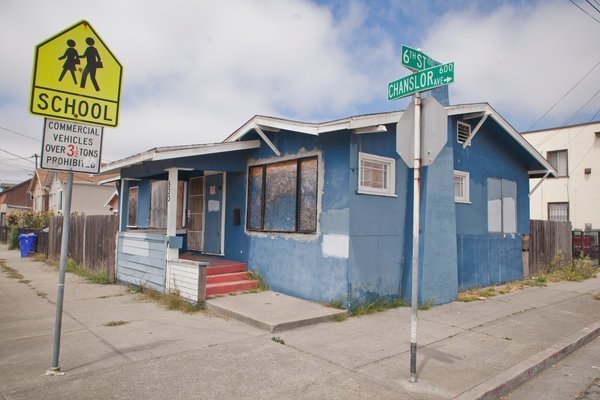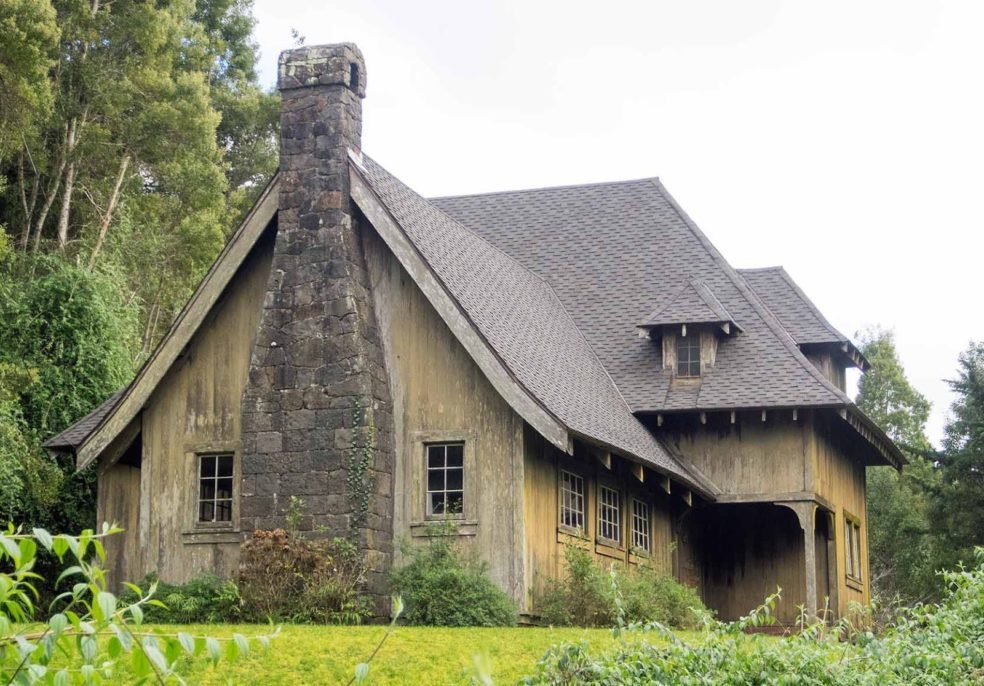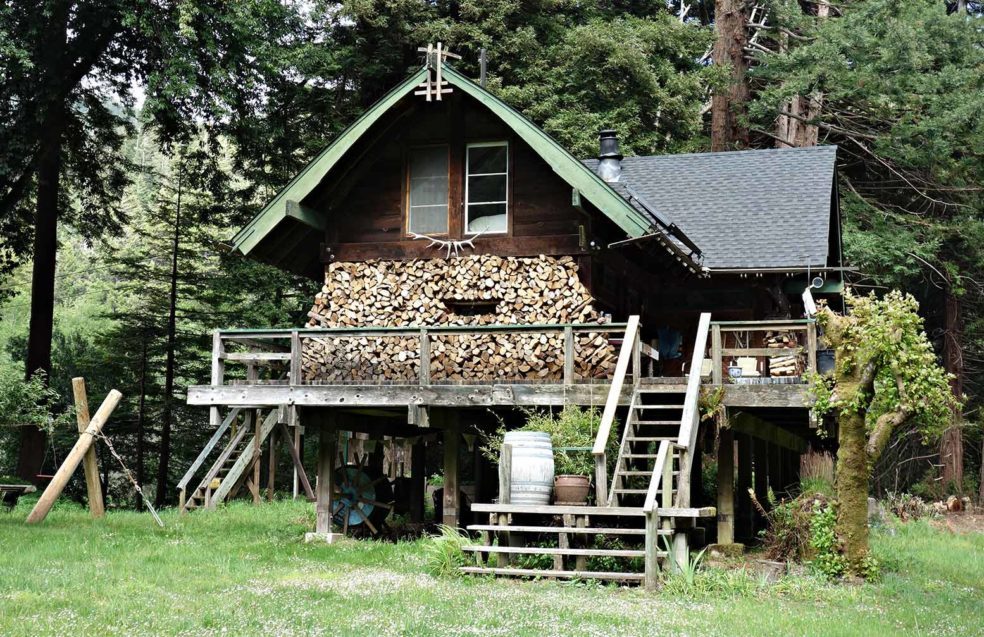Now here’s some carpentry!

Came on this morning as I was here working on a big shift in Shelter Publications’ future output on building.
Nutshell: from country to city,
i.e. from Walden to Detroit
Small Houses in Cities
Stay tuned…
This is such a perfect song:
Tired of Being Alone by Al Green on Grooveshark
You know what? I am suddenly REALLY excited by this idea. Just as I was with the idea of building on a piece of land in the country in the ’60s-’70s.
Different time now.
The last 2 posts hit a nerve: there have been 24 comments on the subject so far.
I was thinking last night about the concept of building in sketchy city neighborhoods:
To be sure, there are these. A beautiful young woman was gunned down 2 days ago in Oakland, trying to protect her kids from a gun fight on the streets. But I believe there a lot more neighborhoods that don’t have drugs and gunshots. When I go to Berkeley, I often cruise Oakland, Richmond, El Cerrito, San Leandro; have checked out Hayward (big town) and Vallejo (on the bay, old buildings downtown, about to get hot I’ll bet). Then there’s Martinez, Benecia, Hercules, San Ramon, Livermore, Danville…This is San Francisco Bay area, my turf, but others in other urban areas will know the outlying towns of big cities.
Point is: not every part of every city’s small building neighborhoods is a crime combat zone. I find tons of neighborhoods that don’t look dangerous.
Here are a few homes in the East Bay. How many little homes like this are in the USA?
I just decided we’ll have a big section in our forth coming book, Small Homes, on “Small Homes in Cities.” If you have something to contribute, write us at smallhomes@shelterpub.com.



 There was an article in the New York Times on March 7, 2015, that mentioned that there are 800 or so abandoned homes in the Bay Area city of Richmond. I think that fixing up run-down homes in less than opulent cities is one of the most viable, practical, and economical things that people wishing to create their own shelter could do in these times.
There was an article in the New York Times on March 7, 2015, that mentioned that there are 800 or so abandoned homes in the Bay Area city of Richmond. I think that fixing up run-down homes in less than opulent cities is one of the most viable, practical, and economical things that people wishing to create their own shelter could do in these times.
In fact, I make a point of shooting photographs of small homes in cities like Richmond, San Leandro, Hayward, Vallejo—nearby places where (some) neighborhoods are run down, but hopefully not infested with drug dealers and crime. I guess it’s a balancing act—if you can find a neighborhood that is on its way up, instead of one that is dangerous and has no hope for the future.
Detroit, for example, has scores of well-built small homes in decaying neighborhoods.
I sort of have a fantasy about fixing up an old place and planting a garden and making friends with the neighbors, who will be pleased that someone is improving their neighborhood. Having a house party and inviting the neighbors. People respond to positive action. It could work.
This will be one of the main subjects in our forthcoming book, Small Homes.
Photo by Peter DaSilva for The New York Times
A lot of young people who visit our half-acre compound are inspired by what we’ve got going here. Handmade home, garden, chickens, workshop, office/work studio. How can they get something like this going, they want to know.
Well, it was sure easier 40 years ago. Our land was $6500, building permit $200, I drew up my own plans, was my own architect and engineer, building and health department officials were reasonable, there was no coastal commission…
Since then, the bureaucrats have weighted things heavily in their own favor (bureaucrats beget ever more bureaucracy) and building permits in Marin County (Calif.) are something like $50,000 (more than my entire house cost). Building and health departments do not get their funding from the county, but from fees paid by homeowners (or builders), so guess what? Fees are ever higher, now to the point of absurdity. Regulations also have grown to have their absurdities (having to install sprinklers in single family homes is one such absurd requirement). And to the point of it being just about impossible for an owner-builder without a trust fund to build around here now.
So I tell young people, if they’re looking for land to build upon, they have to get a couple of hours away from any of our great cities.
Tomorrow, I’ll post a few ideas of what I might do now were I starting nowadays. It’s a challenge!
 This reminds me of homes designed by Bernard Maybeck and Julia Morgan during the Arts and Crafts Movement in the San Francisco Bay Area in the early 1900s. Note the fine lava rock masonry work of the fireplace, the gentle curves at the ends of the rafters. Well designed, well built.
This reminds me of homes designed by Bernard Maybeck and Julia Morgan during the Arts and Crafts Movement in the San Francisco Bay Area in the early 1900s. Note the fine lava rock masonry work of the fireplace, the gentle curves at the ends of the rafters. Well designed, well built.
 I’m changing the nature of this blog. I (we—Shelter Publications) are going to focus on building,
I’m changing the nature of this blog. I (we—Shelter Publications) are going to focus on building,
carpentry, homes, gardening, and the like on our brand-new — ta-daa:
https://www.theshelterblog.com
It’s been up for a couple of months now, and
its look and function have been steadily improved by Mac Wizard Rick Gordon.
Evan’s doing most of the posting (I’m funneling my posts through him), Lew is
starting at 3 posts a week, and we’re encouraging builders to send us photos
and descriptions of their latest creations.
We hope to build this up so it’s a player in
digiworld —we’re aiming for some major readership. We don’t think there is any
blog or website out there with the type content we are generating. Think of all
the buildings and builders in our books—now coming out daily.store appearances (a slide show and book signing
for Tiny Homes on the Move), and getting such good vibes. It feels like
we’re a tribe. We’re interested in the same things—doing stuff for ourselves
(as much as possible), having a warm, attractive, natural-as-possible
handcrafted home, growing some of our own food…
Remember, it’s “theshelterblog,” not “shelterblog.” The “the” is necessary to get to the right
place. This blog—my own—will continue to follow my
idiosyncratic path through life. Wherever I go, I’m taking you, the reader,
along with me, riding shotgun. It gives me an extra incentive to explore, to
search, to inquire, to shoot photos—if I can come back and tell others about
it.
Tags: architecture, cooking, crafts, design, farming, gardening, green building, homes, homesteading, media, publishing, small homes, timber frame, tiny homes, tiny homes on the move, vehicles 
Rick Gordon has built it and we’ve been tinkering with it for a few months, and finally it feels ready to go. Whereas my blog is all over the place, The Shelter Blog will focus on homes, building, carpentry, gardening, farming, foraging, fishing, homesteading and the home arts. Check it out here:
https://www.theshelterblog.com
Note: it’s theshelterblog.com, not shelterblog.com. You need the article the.
I’m really excited by this. It’s as important — maybe in the long run more so — than one of our books. We have no competition here, since we have feedback from our 40 years publishing books on the subject of shelter. Plus we can share brand-new incoming photos and stories rather than wait years to get same into a book. It’ll be complimentary to our books.
We guarantee at least one new post per day, hope to get multiple posts daily as we get rolling.
Tags: architecture, barns, builders, carpentry, cooking, crafts, fishing, food, foraging, gardening, homes, homesteading, small homes, solar, tiny homes, tiny homes on the move, tiny houses, tools, vehicles, woodwork  Built on pilings because it’s in a flood plain. One year the water came up to the 6th step
Built on pilings because it’s in a flood plain. One year the water came up to the 6th step
 “Price: $0 (must be moved)
“Price: $0 (must be moved)
Location: Grimesland, North Carolina, USA.
The History:…Around 1910, William (Faucette) built this grand farmhouse on the site of the original house, and he lived there with his wife and daughter, both named Louise. The house stayed in the family until 2011, when the owner of an adjacent property bought the estate for the land. He is now offering the house to anyone willing to move it.
Shown: The 4,363-square-foot house has six bedrooms and two-and-a-half bathrooms. It retains original exterior details, such as Doric columns and the center gable’s fish-scale shingles.”
Click here.











